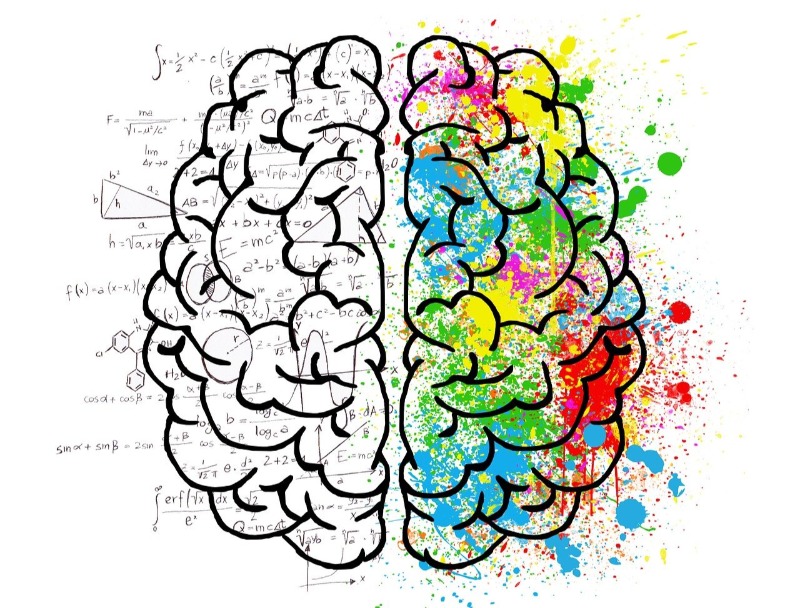Speed Reading Facts for Dummies and Geniuses
The “…for Dummies” media franchise has been a worldwide success. Its distinctive yellow and black cover and simple style is deliberately informal and jokey. Tony Buzan hated the title when applied to the things he loved and taught. This obviously included, “Speed Reading for Dummies.” Tony had several objections: It literally ‘dumbs down’ the subject. The reader proclaims themselves as a ‘Dummy.’ It implies that Speed Reading is a skill used by dummies. These are all pernicious falsehoods, even if said in jest. It should be called “Speed Reading for Geniuses.” Everyone is a potential genius and Speed Reading is one of the tools to acquire the knowledge to be recognised as such. I remember the Brain Club slogan, “Not just anyone can join – Everyone can!” I was consultant on the Dorling Kindersley kid’s book, “Train your Brain to be a Genius” which, in their typical style, is richly illustrated with photos, diagrams and cartoons but not dumbed down at all. Genius is not an exclusive fiefdom but supportive and inclusive. It is a sad fact that the “…for Dummies” format always appears to win out on sales figures. Too many people undervalue themselves, not through modesty, but with a genuine belief they are dumb.
In this post I want to tackle some other falsehoods and dangerous misconceptions. We’ll reveal the facts and bust the myths. Many long-held incorrect assumptions about reading where probably taught to you in school. Teachers of course mean well, but are not always cognisant of the latest psychology and neuroscience. They also have to contend with hokum from some less than ethical companies and individuals. I believe anyone can master Speed Reading and genius is within reach with persistence.
Right and Wong Formulae
“It ain’t what you don’t know that gets you into trouble. It’s what you know for sure that just ain’t so” ~Anonymous (Sometimes wrongly attributed to Mark Twain.)
Tony Buzan liked to talk about what he called, “Wrong Formulae”. These are things that you believe to be true but actually turn out to be incorrect. For example, if you find yourself sinking into quicksand, the best thing to do is to stay as still as possible and shout for help. You cannot pull yourself out. If you believe, and apply, the wrong formula that the best strategy is to struggle, you will sink. If you are an Olympic athlete with tremendous strength and stamina and struggle, you will sink even faster. Putting energy into the wrong formula can be self-destructive.

Don't subvocalize (say the words under your breath to yourself or in your head).
Many Speed Reading courses advocate completely eliminating subvocalization, claiming it slows you down. In fact, hearing the words in your head is almost impossible to completely eliminate. If you accomplish this you’re likely to see a marked reduction in comprehension. You can subvocalize faster than you can speak as you don’t have the physical constraints of moving your mouth. A better strategy is to imagine a volume control in your head. Turn it down so you still ‘hear’ the words but less prominently, at the back of your mind. This has a secondary benefit. If you’re reading for study, stopping and starting to make notes disrupts your rhythm. Far more efficient, is to remember key ideas as you read and then note them down at the end of a section. There is a memory principle called the Von-Restorff effect. This says that in any given number of items to be learned, an item that is notably different from the rest will be more readily recalled than the others. When you come across a key point in the text which you want to remember, SHOUT IT OUT in your head. This will be less disruptive to your flow and makes the point ‘notably different’. It is therefore more easily recalled when you come to make your notes.
Finger pointing on a page is wrong. It slows you down.
You probably used your finger to point at words when learning to read. At some point the teacher will have said something like, “Take away your finger. It’s childish and slows you down.” It is far better to say, “Move the finger quicker.” Having something to follow improves eye tracking, rhythm, focus, fixations and eliminates back skipping. It is a vital tool. A finger is not optimal since the body of your hand covers up part of the page. You can use a pen, pencil or chopstick as a guide instead but the principle of gliding along under the words as you read them still remains.

To understand a book's content you must read it "slowly and carefully".
This is another piece of nonsense I was taught at school by good intentioned but misinformed teachers. As speed increases there is less time to make extraneous associations which deviate from the authors intent. You focus better and take in information at closer to the speed of thought. To understand a book you’re better off reading it “quickly and carefully”.

Always start reading at the beginning of a book and go through to the end.
This is only true in detective novels where you don’t want to find out who the murderer was until the end. In every day reading, especially textbooks, it is preferable to selectively read. This does not necessarily need to be in sequence. It is often a good idea to survey a whole book by skimming before reading relevant bits in depth.
Go back and understand what you are reading before you continue forward.
No, no, no! Going back to understand before continuing forwards is counter-productive and massively slows you down. As you continue forwards you gain more context which helps you understand whatever it was you found difficult. It is almost never necessary to re-read for comprehension.
Reading is a logical left-brain activity.
Nobel Prize-winning research by Roger Sperry demonstrated in the 1960s that each hemisphere of the brain specializes in certain tasks. By studying epilepsy patients who had undergone a procedure that separates the left and right hemispheres of the brain, Sperry determined the left side of the brain handles analytical and verbal tasks, while the right half takes care of the spatial perception tasks and contributes emotional context to language. We now know this to be an over simplification and there is a slight left / right preference according to the task the brain is undertaking.
The results of this study and others have been misunderstood to link brain lateralization with individual personality traits, such as left brained people being logical and right brained people being perceptive. But according to Harvard Health blog, if you performed a CT scan, MRI or autopsy on the brain of a mathematician and compared it to the brain of an artist, you probably wouldn’t see a difference.
We use ‘Left’ and ‘Right’ purely as convenient labels for modes of thinking. Regardless where in the brain these ‘cortical skills’ are located, reading is a whole brain process. It involves spatial, rhythmic and imaginative thinking as well as lines, logic, analysis and words.

Each word must be read separately.
A key principle of Speed Reading is taking in groups of words. Meaningful chunks link together to give better comprehension. It takes the same length of time to take in a group of four to six words as it does to recognise and assimilate a single word. It makes sense to work with chunks.
As you read faster, your comprehension drops.
When you first start to Speed Read you may observe a reduction in comprehension. This is not a direct consequence of going faster. The reason is that your concentration is divided. Part of your attention is directed towards the process of reading in a new way. Thus, you do not have your full focus on the content. As the skill of Speed Reading becomes second nature and you don’t need to think about it anymore, your full focus returns to the text. Comprehension bounces back to the same, or usually better, than it was when previously reading slowly.
Comprehension should be 100%.
When reading at average speed, comprehension is generally 60 to 80%. An expectation of 100% is unrealistic. It is rare that you actually need 100% anyway. Lawyers who need to go through contracts with a fine tooth comb find that they get better comprehension reading fast. Certainly, reading twice fast is far superior than reading once slowly.
You can only read what you are directly focusing on visually.
Peripheral vision is useful in Speed Reading. It acts as a preview of what’s coming up and a review of what you’ve just read. Although not in sharp focus, you can still take in paragraph structure, sometimes large headings and diagrams. So reading is not restricted solely to the eyes’ direct central focus.

You must not mark or write on a book.
Books should be learning resources. Unless you have a historically significant book like The First Folio of Shakespeare’s plays, it does not need to be revered and treated like an heirloom to be kept in mint condition. Use highlights, underlining, notes in the margin or anything that helps you get the most from a book. You must not mark or write on a LIBRARY book.
There is no relationship between reading and your belief system.
Henry Ford famously said, “If you think you can, or you think you cannot, you are right.” Trust in yourself. Believe you can assimilate and comprehend at high speed and you will be able to do so, with the bit of practise. If you allow self-doubt and fear of missing something to creep into your mind you’ll begin to hold back and thereby self-sabotage your reading.
Best of luck in your journey navigating the truth about reading.

